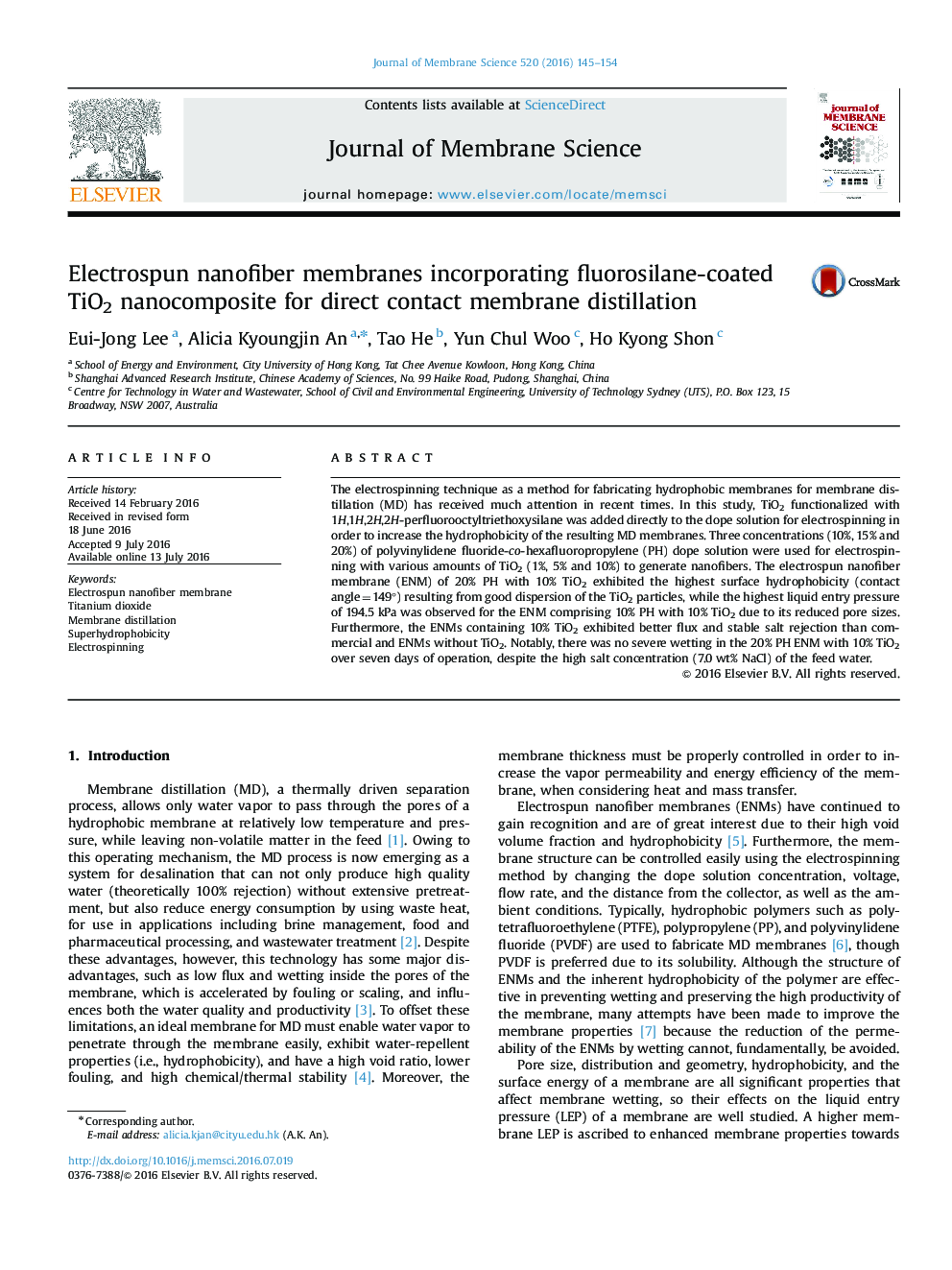| Article ID | Journal | Published Year | Pages | File Type |
|---|---|---|---|---|
| 632154 | Journal of Membrane Science | 2016 | 10 Pages |
•The fabrication of ENMs with addition of modified TiO2 particle to dope solution for MD.•The effect of hydrophobic TiO2 nanoparticle embedded in fibers on properties of ENMs.•Improved ENMs with 149° of contact angle or 194.5 kPa of LEP by addition of 10% TiO2.•The evaluation of DCMD performance with functionalized ENMs by TiO2 particles.•DCMD without deterioration of water productivity and quality in 20% PH with 10% TiO2.
The electrospinning technique as a method for fabricating hydrophobic membranes for membrane distillation (MD) has received much attention in recent times. In this study, TiO2 functionalized with 1H,1H,2H,2H-perfluorooctyltriethoxysilane was added directly to the dope solution for electrospinning in order to increase the hydrophobicity of the resulting MD membranes. Three concentrations (10%, 15% and 20%) of polyvinylidene fluoride-co-hexafluoropropylene (PH) dope solution were used for electrospinning with various amounts of TiO2 (1%, 5% and 10%) to generate nanofibers. The electrospun nanofiber membrane (ENM) of 20% PH with 10% TiO2 exhibited the highest surface hydrophobicity (contact angle=149°) resulting from good dispersion of the TiO2 particles, while the highest liquid entry pressure of 194.5 kPa was observed for the ENM comprising 10% PH with 10% TiO2 due to its reduced pore sizes. Furthermore, the ENMs containing 10% TiO2 exhibited better flux and stable salt rejection than commercial and ENMs without TiO2. Notably, there was no severe wetting in the 20% PH ENM with 10% TiO2 over seven days of operation, despite the high salt concentration (7.0 wt% NaCl) of the feed water.
Graphical abstractFigure optionsDownload full-size imageDownload high-quality image (162 K)Download as PowerPoint slide
